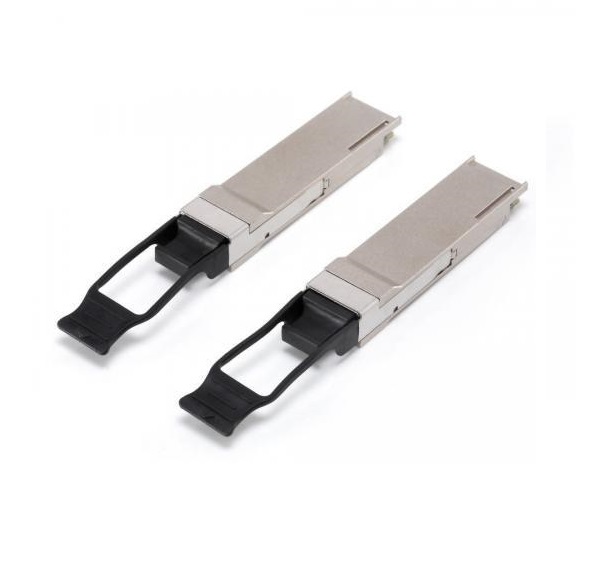- Sales SupportContact Sales
- Call us at: +(86) 15211074652
- Send us a email at: info@zr-fibercable.com
400G OSFP Transceiver Types Overview: A Comprehensive Guide
As data centers and high-performance networks continue to evolve, the demand for faster and more efficient connectivity has led to the development of 400G transceivers. Among the various options available, OSFP (Octal Small Form Factor Pluggable) transceivers have gained significant attention. In this article, we will provide a comprehensive overview of the different types of 400G OSFP transceivers, their characteristics, and their applications.
OSFP Transceiver Overview:
1.1. Introduction:
OSFP transceivers are designed specifically for high-speed networking applications. They offer higher port density and enhanced thermal performance compared to other 400G transceiver options.
1.2. Key Features:
High Port Density: OSFP transceivers support up to 16 electrical lanes, enabling a total data rate of 400Gbps.
Enhanced Thermal Performance: OSFP transceivers feature improved thermal management capabilities, allowing for efficient heat dissipation in high-density deployments.
Electrical Interfaces: They utilize electrical interfaces for transmitting and receiving data.
Types of 400G OSFP Transceivers:
2.1. SR8 (Short Reach) Transceivers:
SR8 OSFP transceivers are designed for short-reach applications, typically within a data center or a single data center campus. They utilize multi-mode fiber (MMF) for transmission and offer a reach of up to 100 meters. SR8 transceivers are well-suited for high-bandwidth connectivity within racks or adjacent racks.
2.2. DR4 (Data Rate 4) Transceivers:
DR4 OSFP transceivers are intended for medium-reach applications, providing connectivity between data center buildings or within a larger data center campus. They utilize single-mode fiber (SMF) and offer a reach of up to 500 meters. DR4 transceivers are suitable for applications that require higher reach without sacrificing speed and bandwidth.

2.3. FR4 (Fiber Rate 4) Transceivers:
FR4 OSFP transceivers are designed for long-reach applications, enabling connectivity over longer distances. They utilize single-mode fiber (SMF) and offer a reach of up to 2 kilometers. FR4 transceivers are commonly used for inter-data center connections or deployments requiring connectivity between geographically dispersed locations.
2.4. LR8 (Long Reach) Transceivers:
LR8 OSFP transceivers provide extended reach capabilities, making them suitable for ultra-long-haul applications. They utilize single-mode fiber (SMF) and offer a reach of up to 10 kilometers. LR8 transceivers are typically deployed in applications where connectivity spans across multiple data centers or requires transmission over long distances.
Features and Considerations:
3.1. High-Speed Performance:
All types of 400G OSFP transceivers provide a total data rate of 400Gbps, allowing for high-speed connectivity and meeting the bandwidth requirements of modern data-intensive applications.
3.2. Power Consumption:
When evaluating OSFP transceivers, it is important to consider their power consumption. Lower power consumption leads to improved energy efficiency and reduced operating costs, making it a crucial factor for data center operators.
3.3. Thermal Management:
OSFP transceivers incorporate enhanced thermal management capabilities, allowing for efficient heat dissipation in high-density deployments. This feature ensures reliable performance and helps prevent overheating issues in densely populated racks.
3.4. Maturity and Availability:
As OSFP transceivers continue to gain market adoption, it is essential to consider the availability and maturity of different types. Availability and supply chain support are crucial factors to ensure timely deployment and compatibility with other network equipment.
3.5. Interoperability and Standards:
To ensure seamless integration with existing infrastructure, compatibility and adherence to industry standards such as IEEE and MSA (Multi-Source Agreement) are important considerations when selecting OSFP transceivers.
Applications:
4.1. Data Centers:
OSFP transceivers find wide application in data centers, especially in high-density environments where maximizing port density and reducing power consumption are critical. They enable high-speed and high-bandwidth connectivity for cloud computing, big data analytics, artificial intelligence, and other data-intensive applications.
4.2. Telecommunications:
With their extended reach capabilities, OSFP transceivers are also suitable for telecommunications applications that require long-distance connectivity between data centers or across geographical locations. They facilitate reliable and high-speed transmission for interconnectivity between service provider networks.
4.3. High-Performance Computing:
OSFP transceivers play a crucial role in high-performance computing (HPC) environments where massive data processing and fast interconnectivity are essential. They enable seamless communication between compute nodes, storage systems, and other HPC components.
4.4. Other Applications:
OSFP transceivers can also be deployed in various other applications, including research and education networks, financial services, content delivery networks (CDNs), and distributed computing environments.
Conclusion:
400G OSFP transceivers offer high port density, enhanced thermal performance, and compatibility with industry standards, making them a preferred choice for high-speed networking applications. The different types of OSFP transceivers, such as SR8, DR4, FR4, and LR8, cater to various reach requirements, allowing for flexible deployment options. When selecting OSFP transceivers, considering factors such as power consumption, thermal management, and application-specific requirements is crucial. By understanding the features and applications of 400G OSFP transceivers, network operators can make informed decisions to meet the ever-increasing demands for higher-speed and more efficient connectivity in data centers and high-performance networks.
You might be interested in
We use cookies to ensure that we give you the best experience on our website. By clicking on "Accept" or continuing to use this site, you agree to our use of cookies in accordance with our Cookie Policy .You can refuse the use of cookies here.
Accept

